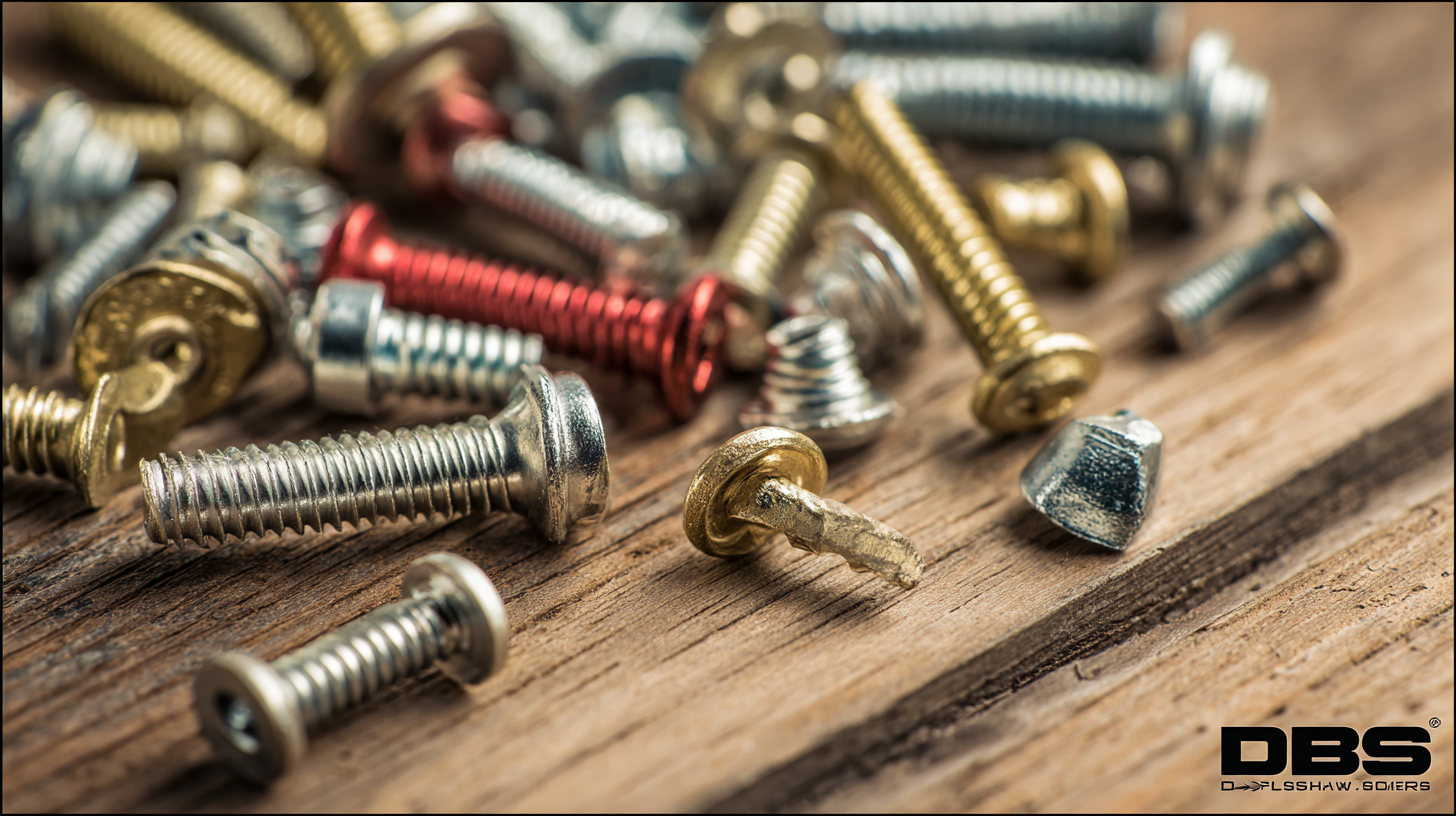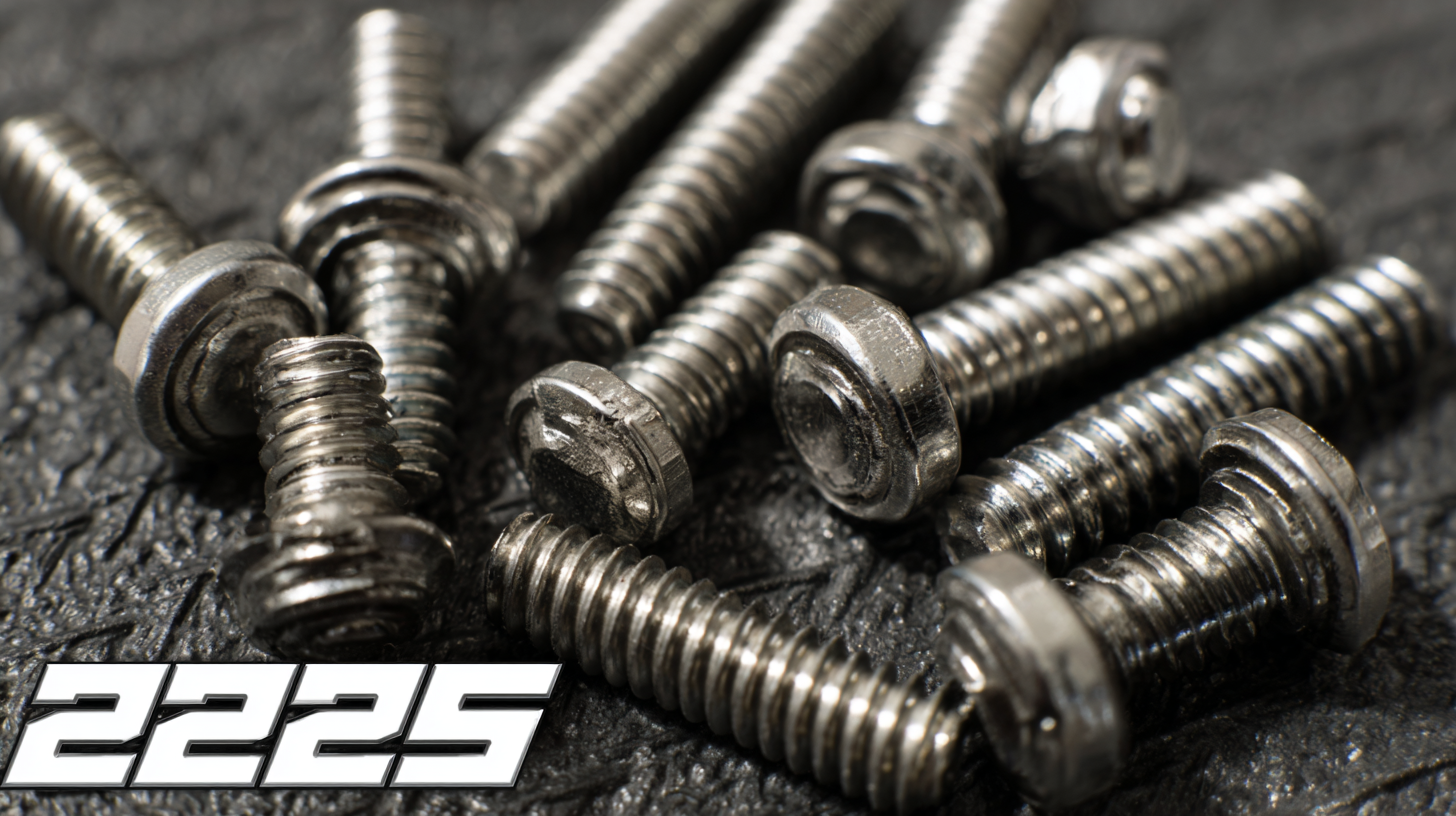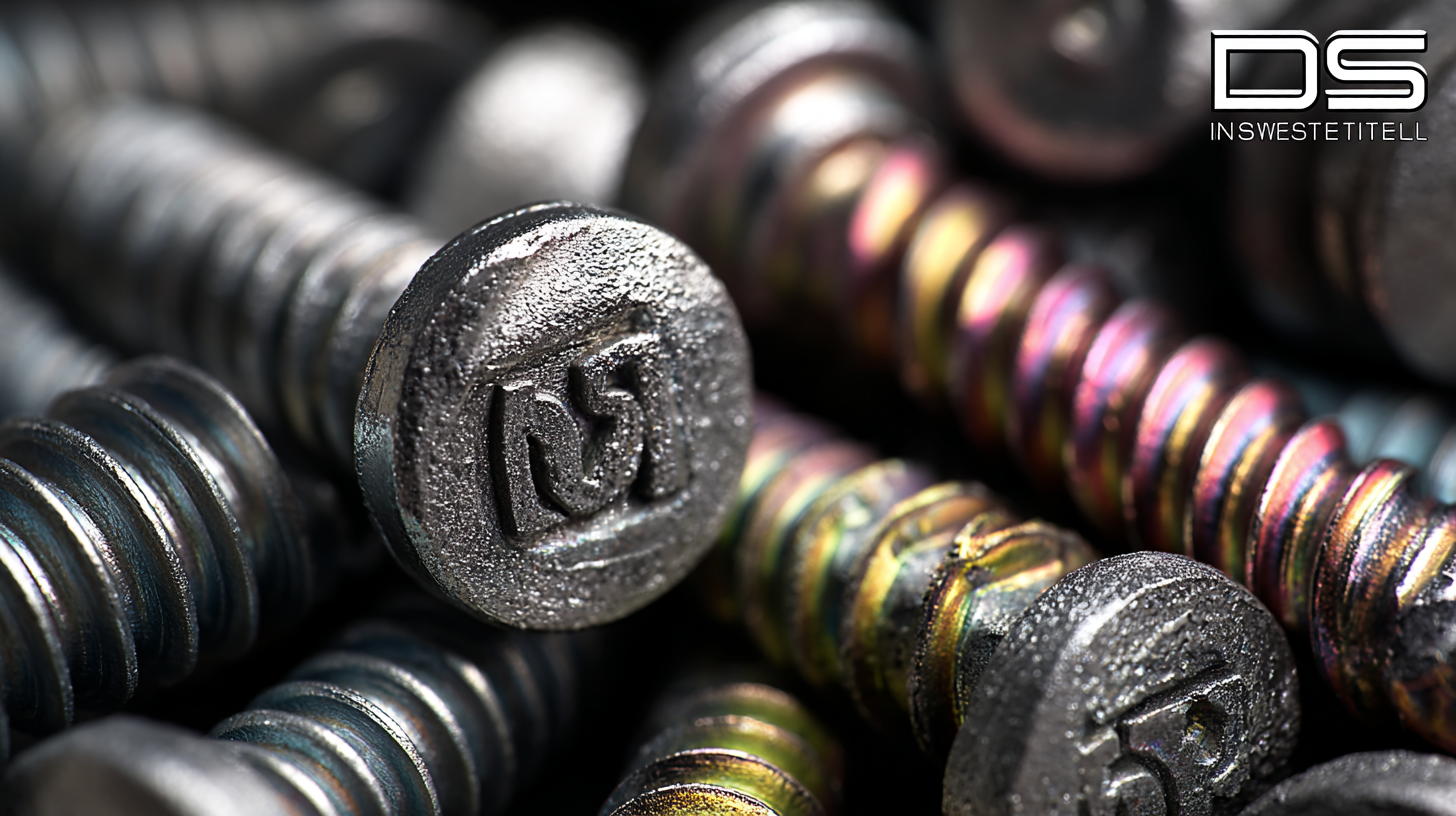
2025 Industry Trends: How to Choose the Best Stainless Steel Screws for Your Projects
As we move towards 2025, the importance of selecting the right materials for construction and manufacturing projects cannot be overstated, particularly when it comes to fasteners like stainless steel screws. According to a recent market report by Smithers, the global market for stainless steel fasteners is projected to reach $22 billion by 2025, driven by the increasing demand across various sectors such as automotive, construction, and electronics. In this competitive landscape, focusing on quality is paramount, especially for manufacturers in China who are poised to lead in exporting premium stainless steel screws globally. This blog will explore key industry trends, offering insights on how to choose the best stainless steel screws that not only meet project specifications but also elevate the overall quality and durability of your applications.

Benefits of Using Stainless Steel Screws in Construction Projects
When it comes to construction projects, the choice of fasteners is critical, and stainless steel screws stand out due to their numerous advantages. One of the primary benefits of using stainless steel screws is their exceptional resistance to corrosion and rust. This property ensures longevity and durability, which is particularly important in outdoor projects or environments exposed to moisture. By investing in stainless steel screws, builders can significantly reduce maintenance costs over time, making them a cost-effective solution in the long run.
Furthermore, stainless steel screws exhibit superior tensile strength, making them ideal for demanding applications such as structural connections and deck constructions. The reliability of these fasteners contributes to the overall safety and integrity of the construction. With the industrial fasteners market poised for growth driven by infrastructure development and advancements in sectors like automotive, selecting high-quality stainless steel screws will be key for stakeholders aiming to meet evolving industry standards and project requirements. As the market expands, builders and contractors will continue to recognize the value of incorporating stainless steel fasteners into their projects.
Understanding the Corrosion Resistance of Stainless Steel Fasteners
 When selecting stainless steel screws for your projects, understanding corrosion resistance is crucial. Stainless steel is engineered to withstand various environmental conditions, but not all grades offer the same level of protection. The most commonly used grades are 304 and 316, with 316 providing superior corrosion resistance due to its molybdenum content, making it ideal for marine environments or exposure to harsh chemicals.
When selecting stainless steel screws for your projects, understanding corrosion resistance is crucial. Stainless steel is engineered to withstand various environmental conditions, but not all grades offer the same level of protection. The most commonly used grades are 304 and 316, with 316 providing superior corrosion resistance due to its molybdenum content, making it ideal for marine environments or exposure to harsh chemicals.
Corrosion resistance in stainless steel fasteners is primarily influenced by the passive layer that forms on their surface, which acts as a barrier against corrosive elements. Factors such as humidity, temperature, and the presence of chlorides can impact this layer's effectiveness. Therefore, it’s critical to assess the specific conditions your screws will encounter. By choosing the right grade of stainless steel and understanding its corrosion properties, you can ensure the longevity and performance of your fasteners, leading to successful outcomes in your projects.
Comparative Analysis: Stainless Steel Screws vs. Other Materials
When it comes to choosing fasteners for various projects, stainless steel screws stand out due to their superior corrosion resistance and durability. According to a report by the Freedonia Group, the demand for stainless steel fasteners is expected to increase by 6.4% annually through 2025, illustrating a significant shift towards more sustainable and resilient materials in construction and manufacturing. Compared to traditional carbon steel screws, stainless steel offers a longer lifespan, which can lead to reduced maintenance costs over time.
Moreover, when evaluating stainless steel screws against alternatives like brass or plastic, the performance metrics are telling. A study published in the Journal of Materials Science indicated that stainless steel screws can withstand higher torque and shear loads than brass, making them a more reliable choice for heavy-duty applications. In environments exposed to extreme moisture or chemicals, stainless steel's resistance to rust and staining becomes a critical factor, further reinforcing its desirability in sectors ranging from marine applications to architectural hardware. This comparative analysis highlights that while initial costs for stainless steel screws may be higher, their long-term benefits often outweigh the upfront investment.
The Impact of Industry Standards on Stainless Steel Screw Selection
When selecting stainless steel screws for projects, understanding the impact of industry standards is crucial. Various regulatory frameworks play a vital role in ensuring that fasteners meet necessary quality and durability benchmarks. These standards not only dictate the material composition but also outline testing and performance criteria, which are essential in environments prone to corrosion. By adhering to these guidelines, manufacturers can produce screws that are better suited for specific applications, ultimately enhancing project sustainability and longevity.
The significance of selecting the right stainless steel screws goes beyond mere functionality; it impacts the entire value chain of a project, particularly in industries aiming for sustainable practices. As the global push for more sustainable energy systems intensifies, primarily driven by frameworks like the Paris Agreement, the demand for reliable and corrosion-resistant materials becomes even more pronounced. Stakeholders must prioritize screws that not only meet production requirements but also contribute to the broader goal of sustainability, particularly as industries face mounting corrosion challenges in their respective applications. This careful selection process fosters innovation and collaboration, leading to advancements in material technology that further support sustainable development.
Key Performance Metrics to Consider When Choosing Fasteners for Projects
When selecting stainless steel screws for your projects in 2025, it's vital to consider key performance metrics that can significantly impact the durability and efficiency of your applications. According to the "Fastener Quality Act" and various industry reports, tensile strength and corrosion resistance are two critical factors. For example, stainless steel screws classified as A2 (304) provide adequate corrosion resistance for most indoor applications, while A4 (316) variants are recommended for marine or high-chloride environments due to their exceptional resistance to corrosion and pitting.
Another important metric is thread engagement, which affects load-bearing capabilities and the overall reliability of the fastener. Industry standards suggest that deeper thread engagement in stainless steel screws can enhance pull-out resistance and shear strength, which is particularly crucial in structural applications. Furthermore, the choice of coating can also influence performance: studies indicate that screws with specialized coatings can improve their lifespan by 50% or more in harsh environments. By focusing on these performance metrics, project managers can ensure that they select the most suitable stainless steel screws tailored to their specific needs.

